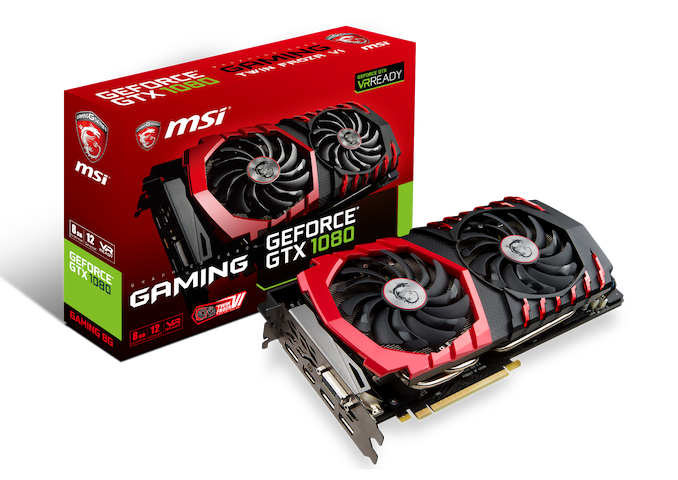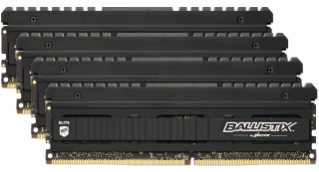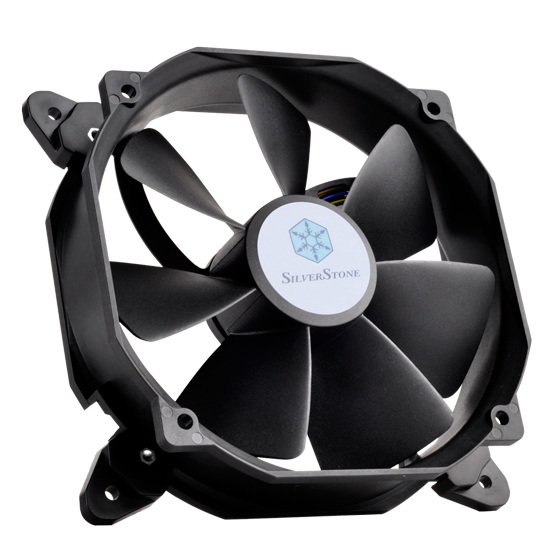The Supermicro C9Z390-PGW Motherboard Review: The Z390 Board With PLX and 10GbE
by Gavin Bonshor on February 1, 2019 9:00 AM EST- Posted in
- Motherboards
- Intel
- Broadcom
- Supermicro
- ATX
- PLX
- PLX8747
- Supero
- Z390
- C9Z390-PGW
- PEX8747
Board Features
The C9Z390-PGW represents Supermicro's flagship entry onto the Z390 chipset. It also represents one of just two Z390 motherboards (one general consumers, one for workstations) to include a Broadcom PEX8747 PLX chip which allows users to use up to four PCIe 3.0 x16 slots. This is useful for users running mutliple PCIe accelerators with full bandwidth available. T
| Supermicro C9Z390-PGW ATX Motherboard | |||
| Warranty Period | 3 Years | ||
| Product Page | Link | ||
| Price | $371 | ||
| Size | ATX | ||
| CPU Interface | LGA1151 | ||
| Chipset | Intel Z390 | ||
| Memory Slots (DDR4) | Four DDR4 Supporting 64 GB Dual Channel Up to DDR4-4000 |
||
| Video Outputs | 1 x HDMI 2.0 2 x DisplayPort 1.2 |
||
| Network Connectivity | Aquantia AQC107 10G Intel I219 V 1 G Intel 9560 802.11ac 2T2R |
||
| Onboard Audio | Realtek ALC1220 | ||
| PCIe Slots for Graphics (from CPU) | 4 x PCIe 3.0 x16 | ||
| PCIe Slots for Other (from PCH) | 1 x PCIe 3.0 x1 | ||
| Onboard SATA | Six, RAID 0/1/5/10 | ||
| Onboard M.2 | 3 x PCIe 3.0 x4/SATA, RAID 0/1 | ||
| Onboard U.2 | 2 x U.2 PCIe 3.0 x4 RAID 0/1 | ||
| USB 3.1 (10Gbps) | 3 x Type-A Rear Panel 1 x Type-C Rear Panel 1 x Type-C Header |
||
| USB 3.0 (5 Gbps) | 2 x Type-A Rear Panel 2 x Type-A Header |
||
| USB 2.0 | 2 x Header | ||
| Power Connectors | 1 x 24-pin ATX 1 x 8pin CPU |
||
| Fan Headers | 1 x CPU (4-pin) 1 x 12 V pump (4-pin) 3 x System (4-pin) |
||
| IO Panel | 3 x USB 3.1 Gen2 Type-A 1 x USB 3.1 Gen2 Type-C 2 x USB 3.1 Gen1 Type-A 2 x Network RJ45 5 x 3.5mm Audio Jacks 1 x S/PDIF Output 1 x PS/2 combo port 1 x HDMI 2.0 2 x DisplayPort 1.2 2 x Intel 9560 Antenna Ports |
||
It's no secret that the Supermicro C9Z390-PGW motherboard is one of the most expensive Z390 motherboards on the market with a hefty price tag of $371 at Newegg. There's a host of high-quality features such as the included PLX chip, the Aquantia AQC107 10G NIC port and even the Intel 9560 Wi-Fi adapter which is one of the better ones currently available. There is plenty of USB 3.1 Gen2 connectivity with a total of nine available with up to seven Type-A and two Type-C supported; one of the Type-C is via a front panel header along with four Type-A. Storage capability is offered via two M.2 slots, two U.2 ports and six SATA ports.
Test Bed
As per our testing policy, we take a high-end CPU suitable for the motherboard that was released during the socket’s initial launch, and equip the system with a suitable amount of memory running at the processor maximum supported frequency. This is also typically run at JEDEC subtimings where possible. It is noted that some users are not keen on this policy, stating that sometimes the maximum supported frequency is quite low, or faster memory is available at a similar price, or that the JEDEC speeds can be prohibitive for performance. While these comments make sense, ultimately very few users apply memory profiles (either XMP or other) as they require interaction with the BIOS, and most users will fall back on JEDEC supported speeds - this includes home users as well as industry who might want to shave off a cent or two from the cost or stay within the margins set by the manufacturer. Where possible, we will extend out testing to include faster memory modules either at the same time as the review or a later date.
While we have been able to measure audio performance from previous Z370 motherboards, the task has been made even harder with the roll-out of the Z390 chipset and none of the boards tested so far has played ball. It seems all USB support for Windows 7 is now extinct so until we can find a reliable way of measuring audio performance on Windows 10 or until a workaround can be found, audio testing will have to be done at a later date.
| Test Setup | |||
| Processor | Intel i7-8700K, 65W, $300, 6 Cores, 12 Threads, 3.7 GHz (4.7 GHz Turbo) |
||
| Motherboard | MSI MEG Z390 ACE (BIOS Version 7B12v12) | ||
| Cooling | Corsair H100i V2 | ||
| Power Supply | Thermaltake Toughpower Grand 1200W Gold PSU | ||
| Memory | 2x16GB Corsair Vengeance LPX DDR4-2400 Ran at DDR4-2666 CL16-18-18-35 2T |
||
| Video Card | ASUS GTX 980 STRIX (1178/1279 Boost) | ||
| Hard Drive | Crucial MX300 1TB | ||
| Case | Open Test Bed | ||
| Operating System | Windows 10 RS3 inc. Spectre/Meltdown Patches | ||
Readers of our motherboard review section will have noted the trend in modern motherboards to implement a form of MultiCore Enhancement / Acceleration / Turbo (read our report here) on their motherboards. This does several things, including better benchmark results at stock settings (not entirely needed if overclocking is an end-user goal) at the expense of heat and temperature. It also gives, in essence, an automatic overclock which may be against what the user wants. Our testing methodology is ‘out-of-the-box’, with the latest public BIOS installed and XMP enabled, and thus subject to the whims of this feature. It is ultimately up to the motherboard manufacturer to take this risk – and manufacturers taking risks in the setup is something they do on every product (think C-state settings, USB priority, DPC Latency / monitoring priority, overriding memory sub-timings at JEDEC). Processor speed change is part of that risk, and ultimately if no overclocking is planned, some motherboards will affect how fast that shiny new processor goes and can be an important factor in the system build.
New Test Suite: Spectre and Meltdown Hardened
For the start of our Z390 reviews, we are using an updated OS, updated drivers, and updated software. This is in line with our CPU testing updates, which includes Spectre and Meltdown patches.


















42 Comments
View All Comments
shabby - Friday, February 1, 2019 - link
Play harder? These guys need some new marketing people.crotach - Friday, February 1, 2019 - link
They could include a sticker in the box that says "My other motherboard is an Asus"prophet001 - Friday, February 1, 2019 - link
Seems like Asus' quality has gone down in recent years?GTVic - Friday, February 1, 2019 - link
I base my buying decisions exclusively on online comments like this.close - Tuesday, February 5, 2019 - link
Your alternative is to buy a significant number of boards (hundreds and up) and use them over a significant period (years) in order to have any hope of a reliability statistic based on a remotely relevant data set. Are you? Because otherwise when it comes to "quality" I agree, you DO base your buying decisions exclusively on online comments like this.GreenReaper - Friday, February 1, 2019 - link
Well that's why you got a Supermicro.philehidiot - Saturday, February 2, 2019 - link
Just out of interest, banter aside, I've been an incidental fan of Asus mobos for many decades in that, whilst I consider all the major brands, I always seem to end up with an Asus. It's not intentional, it's just perhaps that their selection of feature sets to market perhaps always seems to meet my needs. I've never had an Asus fail on me it must be said, (aside from an incident stemming purely from my own cackhandedness around a CPU socket) I've never had an issue and they've always seemed well built. My last Asus board was bought around 5-6 years ago and was just the same as the rest in terms of build. Is the general consensus that Asus's build quality has dropped and they should be treated with caution?jabber - Sunday, February 3, 2019 - link
I've had plenty of Asus and they have all been fine. I've got a X99 Asus at the moment and its been pretty solid. To be honest I've not seen a failed motherboard since the removal of electrolytic caps around 2006. I remember around 2009-2011 I was getting masses of PCs in from 2003/2006 with 'issues' and as soon as I opened them up I would see the crusty bulging caps.Boards have physically improved all round I would say. Now if they could get the bugs out of the BIOS...
Gadgety - Monday, February 4, 2019 - link
Yes, bugs, pathetic. PC industry is supposedly competitive, yet so many present half baked solutions, and lots of marketing talk. ASUS charges extra premium and still doesn't deliver a bug free BIOS.close - Tuesday, February 5, 2019 - link
I have a ROG board that stopped receiving driver and BIOS updates less than 2 years after launch. This wouldn't matter much if the existing drivers worked properly under Win10 and offered all the functionality advertised in big letters on the box. It didn't. I simply take that as a lesson to stay away from the praised high end. At least when they inevitably sh*t the pants I will not be too disappointed.But yes, it's still working although with just the occasional reset in memory parameters where it defaults to the lowest memory frequency. And some other small annoyances with the drive order. Etc. Great job they did on that BIOS.